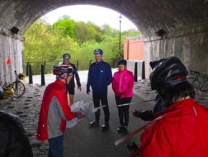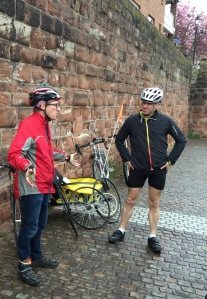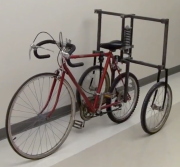If you’ve not heard of the Faculty of Science and Engineering at the University of Chester, you have now. It’s new, fast-moving and extremely welcoming.
What’s it got to do with cycling science? Well, the powers that be at the Faculty have their fingers on the pulse and recognise that cycling is blossoming.
So they invited me to lead a cycling science ride at the weekend, an initiative generously supported by CWAC/iTravel.
That’s why a group of people could be found in a back lane near the River Dee, discussing the functions, materials and dimensions of that most under-rated component, the spoke.
Tangential, radial, three-cross, four-cross, bladed, steel, aluminium, carbon – all the little niceties were discussed vigorously.
One of the cyclists realised for the first time that the front wheel he’d been using for more than a year has lovely radial spokes – and why his rear wheel doesn’t.
To cap it all, another rider, an information systems expert of course, had a tuning app on her smartphone so we could demonstrate to any doubters that it’s the tension in the wire spoke that keeps the wheel together.
The weight of a general practitioner, who volunteered innocently, bearing down on the axle was then shown to be enough to reduce the frequency of the lowermost spoke by half a tone.
Elsewhere on the ride, along Chester’s glorious Greenway, the effects of rolling resistance were demonstrated by putting some air in the tyres on which an esteemed chemical engineer usually rides almost totally flat.
Human balance, steering, the self-stable dynamics of a bicycle, aerodynamics and how to hover simply by pedalling hard (and building an enormous lightweight helicopter) were all covered.
So, if you’re looking to study science or engineering, you could do worse than to consider Chester University. Not only do they know HOW a bicycle works, they also know WHY.
Photos: Garfield Southall








